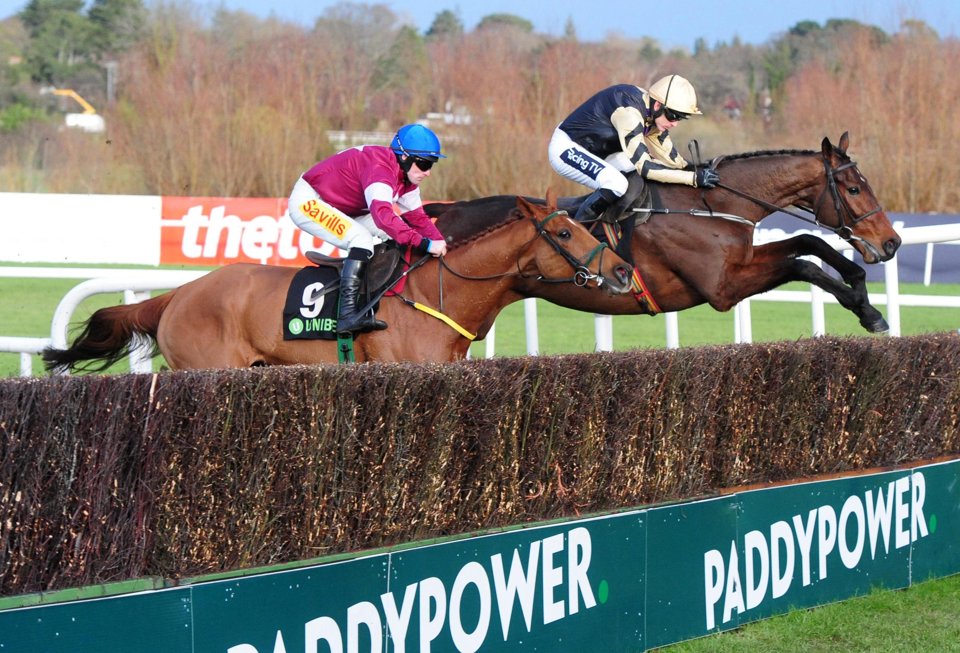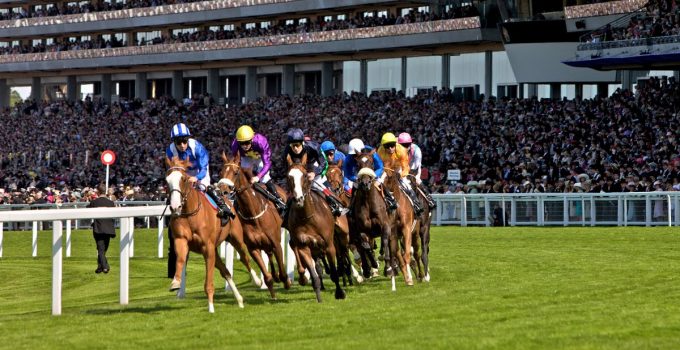Horse Racing Guide Uk
- Uk Horse Racing Guide
- Horse Racing Guide To Betting
- Horse Racing In England Today
- Free Uk Horse Racing Tips
- Today Horse Racing
The first comprehensive guide to UK two year old racing. This book has wealth of knowledge for the expert and the amateur alike. All the different phases of the two year old season in terms of race fixtures and horse development are explained in an easy to read fashion. You can access all of the important horse racing festivals in the UK with a computer or mobile device at the online racebooks recommended by EZ Horse Betting. Here is a beginner’s guide to UK horse racing betting that will help you get off to a good start. So Many Unique Horse Racing Bets! The UK is known for a large number of exotic racing bets. Horse Racing How We Became Equestrian 'Equestrian' is just a fancy term for 'horse riding', but it points to the deep history of riding horses: the term ultimately comes from the Latin word for 'horse'.This is evidence that the practice and skill of riding horses is a rather. There are 10+ major horse racing tracks across the UK, such as Lingfield, Southwell, Ayr, Wolverhampton, Kempton Park, Sandown and many more. Every day of the year at least 3 tracks will be hosting up to 10 races each, providing around 30 UK races - every day. Ross won Racing TV's Tipstar competition in 2020 when he impressed with a number of winners and informative videos. He is a former professional event rider and is now based in the south of France, where he has a business training riders in Europe and last year started a small bloodstock business.
Don’t know your bumpers from your jumpers, your bays from your greys, or your fillies from your colts? You’ve come to the right place. Read on for our beginners guide to horse racing.

History
People have probably been racing with horses – whether on their backs or following in a chariot of some kind – for as long as humans have been able to tame these fine beasts. Evidence certainly points to the ancient Greeks racing with horses as far back as 700 BC.
Horse racing in the form we know today really began in the 17th century when King James I took a fancy to horse racing and the “Sport of Kings” was born, quickly becoming popular with the English aristocracy.
Many of the big races around today originated in the 1700s, a time when horse breeding and the sport itself became more effectively regulated. Racing became evermore popular through the centuries and is presently – thanks to television and the internet – one of the most watched (and gambled upon) sports in the UK and Ireland. (Read our History of Horse Racing article for more information.)
Types of Horse Race

Horse racing in the UK and Ireland is split into two distinct branches. The first, flat racing, is simple: horses start, they run – either in a straight line or round a curved track – then they finish, the winner being the first past the post. The second, National Hunt racing, is slightly more complicated – not least for the horses and jockeys – in that obstacles must be negotiated on the way round the track.
National Hunt racing is split into two main categories: hurdles and steeplechases. (There are also National Hunt flat races called “bumpers”, but these are much less common.) The difference between the two is that horses running in steeplechases must jump fences that are higher and more solid than the hurdles in the hurdle races. Steeplechases often also include open ditches and water jumps, adding just a little more danger / excitement – depending whether you are watching or riding!
In both flat and National Hunt, races are also categorised by the age and experience of the horses, and the distance over which they run. (See our Types of Horse Races article for further details.)
Classifications of Races
In both flat and National Hunt racing there are a series of classifications that indicate the prestige, likely purse value (amount paid out in prize money) and the quality of the horses involved, with Group 1 being the top classification in flat racing, attracting the best horses and offering the biggest purses, then, descending in importance through Group 2, Group 3, listed races and finally handicap races.
In National Hunt, Grade 1 races are the top notch, going down through Grade 2, Grade 3, listed, handicaps, and then bumpers (flat). Races are also given a “class” from 1-7, but all graded and listed races are Class 1 (see our Horse Racing Grades article for more details).
In handicaps, an official from the Jockey Club sets the weight each horse must carry in that race in order to provide a decent spectacle with close and exciting races. Generally speaking, the better the horse, the weight it must carry.
Betting on Horse Racing
For many – perhaps most – fans of horse racing, it is the betting element that brings the excitement, or a large chunk of it. The build up, the tension, the explosion of equine power and the jubilation – or disappointment – as the horse you backed finishes the race is part and parcel of today’s horse racing experience.
If you are a beginner to horse racing, you are most probably – but not necessarily – a beginner when it comes to betting in general. If so, take a look at our How to Bet on Horse Racing article for the lowdown.
In brief, you first need to get a handle on the odds, most regularly displayed as fractions in the UK system. For instance, odds of 5/1 would mean that for every £1 you bet, you would receive £5 back (plus your original stake) should your horse romp home. Easy, right?
Then you have each way bets. If you back a horse each way, you are really placing two bets: one for the horse to win the race, and another for it to “place”. Depending on the size of the field, the horse can place in second, third, fourth and sometimes fifth (as bookmakers sometimes have special offers on the biggest races like the Grand National). The place part of the bet is paid at a proportion of the main odds, often ¼.
An each way bet will cost you twice the stake of a win (or “on the nose”) bet, but you have two chances to win. And if your horse wins the race you are paid out for both the win and the place bets.
There are many other types of bet available in horse racing, from predicting the correct order the first two or three horses finish in a race to multiple selections from different races to Totepool bets. It is clearly important to understand the type of bet you are placing before you place it, so check out our How to Bet on Horse Racing article to make sure you get it right.
Picking a Winner at Horse Racing

Easier said than done, or we’d all be rich and the bookies would all be bankrupt. There are obviously many factors to take into account when picking a potential winner from a field of horses: form, pedigree, trainer, jockey, whether the ground is suited to that horse, whether they like the current weather conditions, what weight they are given in a handicap, whether their odds have moved significantly… among many others. For a rundown on how to go about making head or tail of it all, read our How to Win at Horse Racing article.
Of course, if you don’t fancy studying the form and the stats for hours on end, you could take the short cut to success and let us do the hard work for you. We post regular horse racing betting tips on this site and will be hopefully picking a good few winners.
Opening for business in 2009, Ffos Las became just the third racecourse to be based in Wales, and the first new National Hunt track to open anywhere in the UK for over 80 years. Also providing flat racing throughout the summer months, this Carmarthenshire venue – which lies on the site of a former open cast mine – is now widely recognised as a high-quality dual-purpose track.
Ffos Las, which translates as “Blue Ditch”, benefits from sitting in a natural amphitheatre, with the spectacular views down the Gwendraeth Valley and quality action on the track proving hugely popular with punters. Staging around 20 meetings in total, the feature contests of the season are October’s Welsh Champion Hurdle and the West Wales National which takes place in April.
Racecourse Facts
| Location | Country | Race Type | Track Surface |
|---|---|---|---|
| Carmarthenshire | Wales | Flat, Jumps | Turf |
Course Summary
Both the flat and National Hunt action takes place on the same course at Ffos Las, which in terms of its layout is one of the most conventional in the British Isles. Left-handed and oval in nature, with a circuit length of 1m4f, the track features long, wide straights and fairly gentle and sweeping bends. Flat throughout, with only a very slight rise in the back straight and corresponding slight descent in the home straight to contend with, this galloping course is considered to be one of the most straightforward and galloping around – often being compared to the well-regarded Newbury in its configuration.
The going at the track had proven to be a major issue in the early years, with bog-like conditions being far from an unusual occurrence during the winter months. A £200,000 investment in the drainage system at the track in 2015 has gone some way to alleviate this issue, but the going does still lean towards being on the soft side of good on average, and can become very testing during particularly wet periods. During brighter periods, the problems caused when the sun gets low can occasionally result in the omission of obstacles in the home straight.
Notable Trends
When looking at the results here in recent season, there are a few names to stand out amongst the riders. Of the flat jockeys it is Oisin Murphy who leads the way in terms of strike-rate with a figure of 30% – good for a profit of £3 to £1 level stakes. Rossa Ryan’s strike rate is lower at 21%, but he tops the pile with an excellent level stakes profit of almost £28. Gavin Sheehan (28% strike rate, almost £7.50 level stakes profit) is the standout performer amongst the National Hunt riders.
Uk Horse Racing Guide

Turning to the trainers, Archie Watson (33% strike rate, £5.40 level stakes profit) and Roger Charlton (26% SR, near £32 level stakes profit) have been the men to follow on the flat, with David Rees (15% strike rate, over £36 level stakes profit) topping the profit figures over jumps.
Not the greatest of tracks for supporters of the market leader, all National Hunt race categories have handed a level stakes loss to jolly backers in the last few years. Results have been only slightly better on the flat, where sticking to backing the favourite in races restricted to runners aged four and older would have returned a 39% strike and around £3 level stakes profit.
Ffos Las Flat Course
In addition to the main oval section of the course, the flat track also contains two chutes. The first of these runs directly into the home straight and contains the starting points for 5f and 6f sprints, with the second leading into the back straight and containing the 1m4f start. Races over 1m, 1m1f, 1m2f, 1m6f and 2m all begin on the round section of the course.
Horse Racing Guide To Betting
Given the long straight sections and gentle bends, together with the flat conditions and distinct lack of quirky elements, there is nothing here that should prevent a runner from showing their best form. Long-striding gallopers will be in their element given the amount of time they are granted to hit full stride, whilst the long and wide straight sections provide hold-up performers with ample time and room to come with a late finishing burst. Front runners can go well but will need to be given a well-judged ride as it can seem like a long way to the line in the 4f home straight.
The Draw
Horse Racing In England Today
Being a relatively new track, which stages the majority of its fixtures over jumps, Ffos Las doesn’t have quite the volume of draw data to assess as other more established courses. One common observation is that the ground seems to ride slower towards the inside rail in soft conditions, but the stats don’t seem to back that up. Across all flat races at the track at the time of writing, 11% were won by low drawn runners, 6.85 by those in the middle and 10.5% high – a pattern which only varies marginally depending upon the prevailing going. This evidence would suggest that middle draws are best avoided, but any conclusions can only be tentative given the relatively small sample size.
Ffos Las Jumps Course
Free Uk Horse Racing Tips
Both chase and hurdles contests take place on the main oval section of the track, with the chase course lying inside the hurdles track. Both courses are wide and galloping in nature, featuring a 4f home straight, but only a short run in of 100 yards or so following the final obstacle.
Those tackling the chase course will face a total of nine fences per circuit – five plain and two open ditches – with five obstacles lying in the back straight and four in the home straight. The Ffos Las fences are thought to provide a firm but fair test of jumping ability, not being punishingly stiff, but by no means easy.
Lying to the outer section of the oval, the hurdles course is ever so slightly more galloping than the chase track and feature six standard flights, evenly split between the back and home straights.
Today Horse Racing
Given those long straight sections, and ground which is regularly on the soft side of good, the National Hunt events at the track do provide a solid stamina test. The jockeys are of course aware of these demands and tend to ensure that races are run at a sensible, rather than breakneck pace. Both front runners and those looking to come with a late run can go well here, but those on a hold-up performer won’t want to leave it too late due to that relatively short run in after the last.